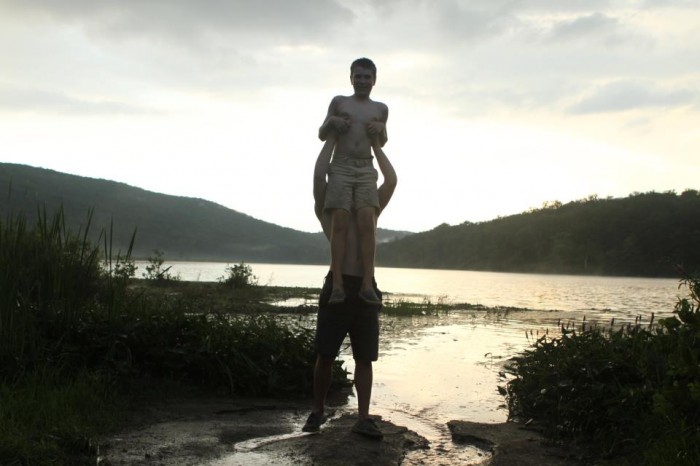An Act of Trust
“I really don’t like to have my hand held when I’m watching a film…I wanted to trust my audience.” – Daniel Patrick Carbone
There were many signs of change at the Tribeca Film Festival (TFF) this year. But what I found most encouraging, were the number of films that broke from conventional dialogue and narrative structure in favor of a more human approach. Rather than telling you what to feel, these films presented real, emotional experiences and let the audience respond instinctively. Hide Your Smiling Faces, a narrative feature about two young brothers grappling with the reality and concept of death, was perhaps the most notable example of this shift. There are few words exchanged throughout the film. Instead, the story unfolds through body language, facial expressions and music.
Ryan Jones and Nathan Varnson are outstanding as the two brothers. The natural ease with which they interact with each other and the camera makes you forget that this is a movie. It almost feels like you are observing the boys from a few feet away from beneath an invisible cloak. In the post-screening Q&A, writer/director/editor, Daniel Patrick Carbone spoke about his choice to work with two fairly inexperienced lead actors. He said that he wanted to make something that felt human, and “sometimes it’s hard for someone schooled in theater to act in a way that is realistic.” To allow for this realism, he gave his actors a lot of freedom. “The dialogue was entirely up to them,” he said. “As long as they stayed within the boundaries of the scene.” Many of the more poignant moments in the film were actually shot between takes, when the boys were just doing their own thing. “You can’t tell them to do this or do that, or it won’t come across as honest,” Carbone said.
While it does not have a conventional story arch or climactic finale, Hide Your Smiling Faces commands your attention, by giving you something real to respond to and interpret. “I really don’t like to have my hand held when I’m watching a film,” Carbone said. “I wanted to trust my audience.” Presented in a loose, vignette-based form, the film is a series of quiet moments from daily life woven together by the lush, natural beauty of rural New Jersey and a beautiful score by Robert Donne. Carbone had initially aspired to create a film without any music, but quickly recognized its importance. “The music is like another character,” he said. “It glues pieces together that aren’t held together by traditional narrative.”
It is only fitting that such a participatory film was partially funded by a Kickstarter campaign. The popular crowd-funding platform is changing the way that art gets made, bringing filmmakers and audiences together to create truly independent films. More than 3,000 short films and nearly 5,000 feature-length films have been successfully funded on Kickstarter since 2009. About half of the films we saw at TFF this year received some backing through the platform. “It’s a powerful way to connect with people who really believe in a project,” said Carbone in a TFF interview with Karen Kemmerle.
Iconic directors like Kubrick and Cassavetes were masters at creating engaging, human experiences. But it’s rare to see contemporary movies that prioritize emotional authenticity and relinquish so much control to their audience. I’m happy to see works like Hide Your Smiling Faces as a sign of a new era of filmmaking.
– Becky


